In time for Movember, I wanted to bring some awareness to men’s mental health – regarding depression & anxiety.
There are many types of depression & anxiety with symptoms differing from person to person, but one thing is for sure – yoga can HELP. For many people, the movements and poses found in yoga paired with deep breathing have been proven to help alleviate your symptoms.
That’s why I wanted to make a blog on how yoga can help manage your depression and anxiety. It’s about to get super sciency in here.
I’ll cover:
- How Does Yoga Help With Depression & Anxiety?
- How Does Yoga Manage Stress?
- Yoga Induces A Deep State of Physiological Relaxation
- How Does Yoga Change Your BRAIN Chemistry?
- Yoga Gives You A Community
- 5 Yoga Poses for Depression & Anxiety
- Support Men’s Mental Health
How Does Yoga Help With Depression & Anxiety
Depression and anxiety are some of the most prevalent mental health conditions in the world, but the mechanisms behind them aren’t completely understood. However one thing is for sure, stress is a large contributing factor.
But what is even stress? There’s actually several kinds of stress including: routine stress, usually from the pressures of school, work, family, and other responsibilities; acute stress, usually from larger events such as a death, divorce, or losing a job; and chronic stress, which never lets your body return to a state of relaxation and normal function.
For many people with depression and anxiety, chronic stress is the big one that can cause a multitude of problems such as headaches, sleeplessness, sadness, anger, and irritability.
Over time, the continued strain on your body from stress can contribute to serious problems such as heart diseases, high blood pressure, and even – you guessed it – depression and anxiety. In fact, stress can cause or even worsen depressive symptoms.
So how can yoga help with depression & anxiety? By taking one of the major contributors – stress – and managing it through mindful exercise and breathing techniques.
Yoga is a mind-body practice that’s proven to reduce perceived stress (immediate stress). This is possible because yoga, unlike other forms of exercise, pairs breath work with physical exercise. This brings your present mind to focus solely on your body and the breathing at hand, which, in turn, steers your mind away from stressors of your day to day – bringing awareness to your body and relaxing your mind.
In fact, according to a Havard Mental Health Article, yoga helps with exaggerated stress responses and works similarly to meditation, relaxation, or even socializing with friends.
How Does Yoga Manage Stress?
The slow methodic breathing found in yoga works against your natural fight-or-flight response (sympathetic nervous system) and as a result: reduces your heart rate, blood pressure, eases respiration, and most importantly reduces your immediate stress response.
For those with depression or anxiety, this physiologic state opposite of the flight-or-flight response allows them to unhook themselves from thoughts, emotions, and impulses that can be negative or destructive – improving mental health.
That being said, to actually reap the benefits of stress-relieving yoga, you to need practice yoga correctly. This means focusing on controlled breathing through every pose or motion. For challenging poses where your body is fatiguing and shaking on you, focusing on breathing and your body is easy.
However, in more restorative and relaxing poses, your mind tends to wander and you lose that mind-body connection – thinking about work, school, family, or other stressors. But to get the most out of your yoga practice, refocusing your breathing and restoring that mind-body connection is essential. It might take a lot of practice to achieve this, but it’s worth it.
Yoga Induces A Deep State of Physiological Relaxation
Finding mental relaxation is important for managing symptoms of depression, anxiety, and even stress, but most activities can’t achieve the deep level of physiological relaxation you need to truly induce the relaxation response (the counterpart of the fight-or-flight response).
But what is a deep state of physiological relaxation?
It’s a shift to calm and relaxation on the neurobiological level, shifting from a state of tension to a state of calm. But most activities that are “relaxing” aren’t enough to relax your biology on a cellular level.
Having a good time with friends and family still requires some level of brain and body stimulation to talk, move our face and bodies, and to listen and respond to social cues. We need some level of adrenaline pumping through our bodies and brain to achieve all this, and for those with depression or anxiety, this can be extremely taxing.
For the body to truly relax at the nerve and cellular level, we need to shift it from a state of excitement to a state of deep rest and relaxation. Only deep breathing paired with mind-body activities like yoga can achieve this.
But not all yoga is the same. You won’t get into this deep state of relaxation through a high-intensity vinyasa yoga class. Instead, for this particular application, you should focus on restorative yoga focused on deep stretching, breathing, and relaxation like yin-yoga.
Still skeptical if it actually works?
Well, an interesting study from in 2013 found that yoga and other mind-body activities such as mediation and deep breathing actually produce an immediate reduction in the expression of genes linked to inflammatory responses and stress-related pathways – crazy right?
How Does Yoga Change Your BRAIN Chemistry
Your brain chemistry plays an important role in depression and anxiety disorders. One of the most noteworthy chemicals related to these disorders is the inhibitory neurotransmitter y-aminobutyric acid or GABA (which is a lot easier to say).
Studies have shown that people with anxiety or depression disorders have a reduced brain concentration of GABA, and antidepressant drugs work to counteract this deficit.
But even if you’re taking these drugs yoga can still help.
A study in 2010 found that yoga actually increases the level of GABA activity in the brain, leading to greater improvements in mood and a decrease in anxiety. This seems to happen because yoga, unlike other exercises, stimulates and increases activity in the parasympathetic nervous system (the relaxation response).
However, an intense yoga workout that’s going to drench you in sweat and leave you a wobbly noodle does the opposite of this – stimulating your sympathetic nervous (the flight-or-fight response).
So to effectively stimulate your parasympathetic nervous system and increase your GABA activity, you should focus on less challenging restorative poses usually found in a yin-yoga practice. Think calm breathing, deep stretching, and light muscle engagement.
Lastly, Yoga Gives You A Community
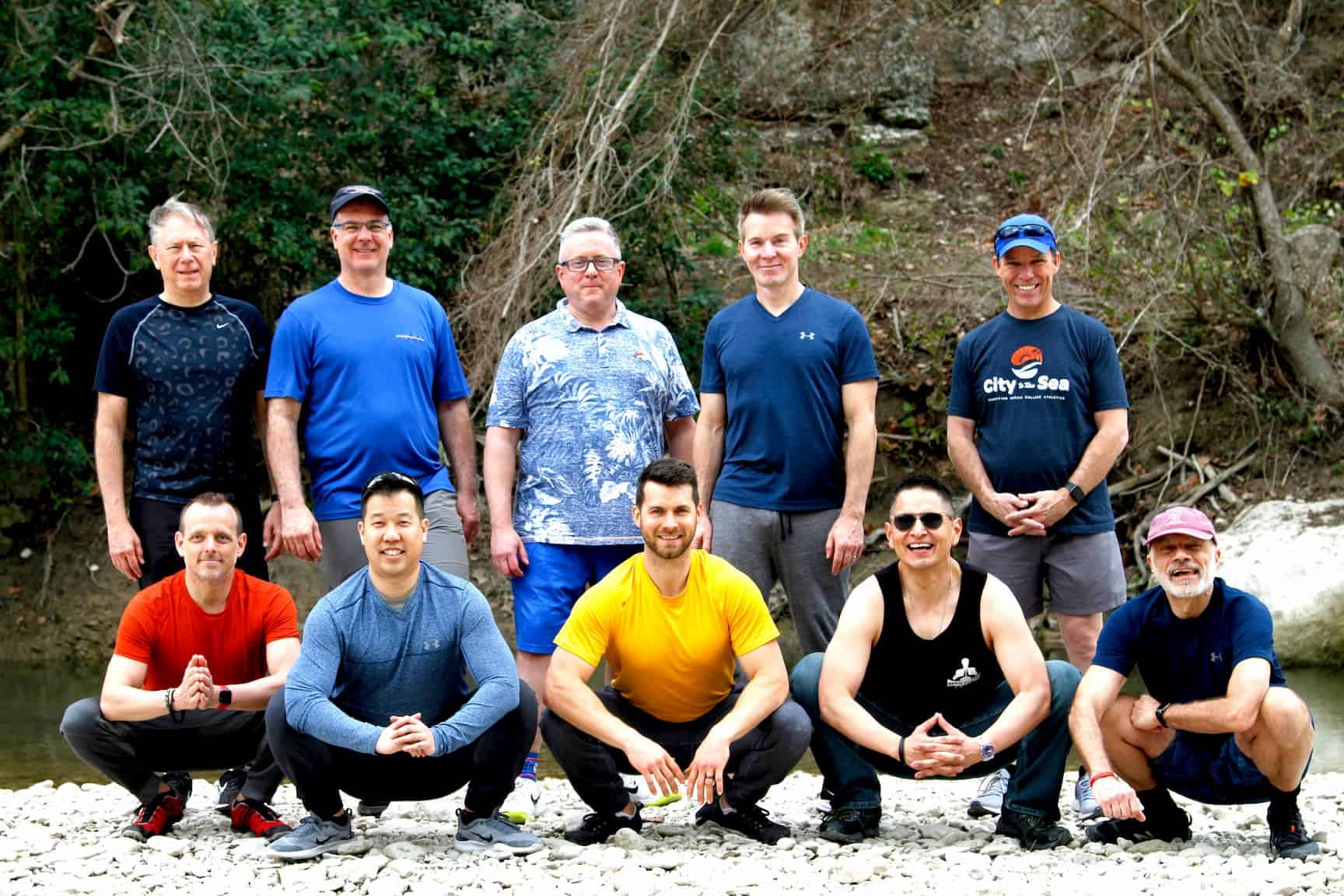
It’s not an overstatement to say, “we need other people to survive.” A network of family and friends is important to everyone, but even more so for those struggling with depression and anxiety.
Practicing yoga is a single-person activity, but it doesn’t mean you’re doing it alone. Yoga teaches self-exploration and patience, especially as you develop more strength and flexibility to tackle more advanced poses.
This brings like-minded people together to support each other through the practice of yoga. Even online communities like Man Flow Yoga are supportive, funny, and most importantly they provide you with a tribe.
For those struggling with mental illness, the supportive communities that yoga offers can be life-changing and might even save a life.
Want to join Man Flow Yoga? We offer tons of restorative yoga workouts at the click of a button, and you’ll get instant access to the exclusive Man Flow Yoga Community Facebook group, where the jokes are thrown around, but more importantly – where we support each other. You can join for a 7-Day Trial for just $1 – Click here to check it out!
OR if you just want a soft intro to our yoga, join our FREE 7-Day Challange Below!
Signup for the FREE 7-Day Challenge
Yoga for Depression & Anxiety Exercise Video
5 Yoga Poses for Depression & Anxiety
If you don’t have time for the whole routine, here are five essential poses to slow you down, calm your mind, and start stimulating that deep relaxation response. Remember to focus on your breathing and use that to lean deeper into each pose.
Child’s Pose
This is an all-purpose pose to relax your body and release tension in your spine, back, and hips. Focus on lengthening the spine and deep breathing as your body slowly leans farther into the position.
Technique:
- Start on all fours with shoulders over hands and hips over knees. Widen knees slightly wider than hip-width apart, and touch big toes together.
- Shift your hips back toward heels as far as you comfortably can. Keep torso as long as possible.
- Keeping hips pushed back, walk your arms forward on the floor to stretch your back, and place hands shoulder-width apart.
- Lightly squeeze arms and shoulders toward one another, and firmly press hands into floor.
- Tighten lower abs, and draw ribs in.
- Hold the posture, inhaling to expand your chest and fill lungs, and exhaling to tighten abs and draw ribs in.
Reclined Twist
This is an essential twist for a strong and mobile back. It not only feels good, but it’s also great for relieving tension.
Technique:
- Lie on your back.
- Lift your knees directly over your hips. Bend your knees and relax your legs.
- Extend arms directly out to the sides with palms facing the ceiling.
- Lower your legs to the left, keeping the legs stacked.
- Place left hand on the right knee. Use your core to twist, and pull your ribcage toward your core to deepen the stretch in your back.
- Press the crown of your head away from your shoulders, and turn to face the right.
- Hold the posture, inhaling as you maintain your position, and exhaling as you squeeze your core and deepen the twist.
- Repeat on the other side
Lizard
This deep-lunge stretch opens the hips, releases tension in your back, and decreases soreness in the lower body. Focus on further leaning your hips forward in conjunction with your breath.
Technique:
- Start in Plank with your shoulders over your wrists and your core engaged. Form a straight line from head to heels.
- Step your left foot to the outside of your left hand. Align left knee over the ankle.
- Keep core engaged and hips level. If this movement from plank is difficult, rest your knees on the floor, then step the foot up.
- Lower your right knee to the floor and untuck your toes.
- Shift left foot forward and to the left a few inches until you feel a deep stretch in the right hip.
- Inch your right foot back to extend the right leg as far as you are able.
- Lift your chest. Maintain a flat or slightly arched back.
- Hold the posture, inhaling as you lengthen and lift the spine, and exhaling as you sink hips deeper.
- Repeat on the other side.
Thread The Needle
This restorative posture stretches the rotator cuff muscles, relieves upper-back soreness, and releases shoulder tension.
Technique:
- Start in Child’s pose with your knees wider than your shoulders, big toes touching, and hips shifted back toward your heels. Keep arms and torso long.
- Slide your left arm under your right arm between the right hand and right knee, palm facing up.
- Press the back of your arm into the floor, and lightly pull it back to the left to stretch the left shoulder.
- Hold the posture, inhaling as you expand your chest, and exhaling as you deepen the shoulder stretch.
- Repeat on the other side.
Reclined Hamstring Strap Stretch
Using a strap lets these style of stretches become more accessible, so you can focus less on engaging the opposing muscles and really enjoy the deep stretch that comes with using a strap.
Technique:
- Lie on your back.
- Position a strap on the arch of your right foot, and hold the ends of the strap with both hands.
- Rest your left leg on the floor.
- Keeping the left leg flat on the floor, straighten the right leg.
- Reach the toes of your right foot toward your shin and press the heel up to stretch your calf.
- Engage your inner thighs, and relax your shoulders, head, and back on the floor.
- Slightly tuck chin to keep neck and spine neutral.
- Hold the stretch, inhaling as you maintain the position, and exhaling as you deepen the stretch by pulling the leg closer to your chest.
- Repeat on the other side.
Support Men’s Mental Health
We’re teaming up with Movember to bring awareness to men’s mental health and make a difference in suicide prevention. For many guys, it’s really hard to open up about mental health issues and seek the help they need, but we’re changing that!
If you’d like to support Movemeber check out our donations page! Click here to make a difference!
Additional Resources
About the author, Dean Pohlman, Founder & CEO of Man Flow Yoga, Author of Yoga Fitness for Men, Expert on Yoga Fitness for Men.
Looking for non-spiritual, yoga for men workouts?
Learn More About Man Flow Yoga and how it can help you with your fitness goals:
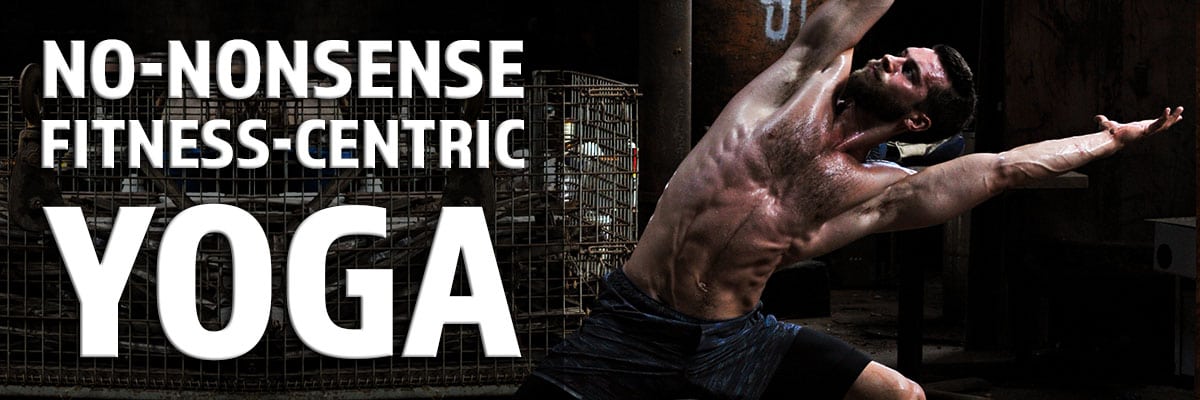 Join Today for Instant Access!
Join Today for Instant Access!
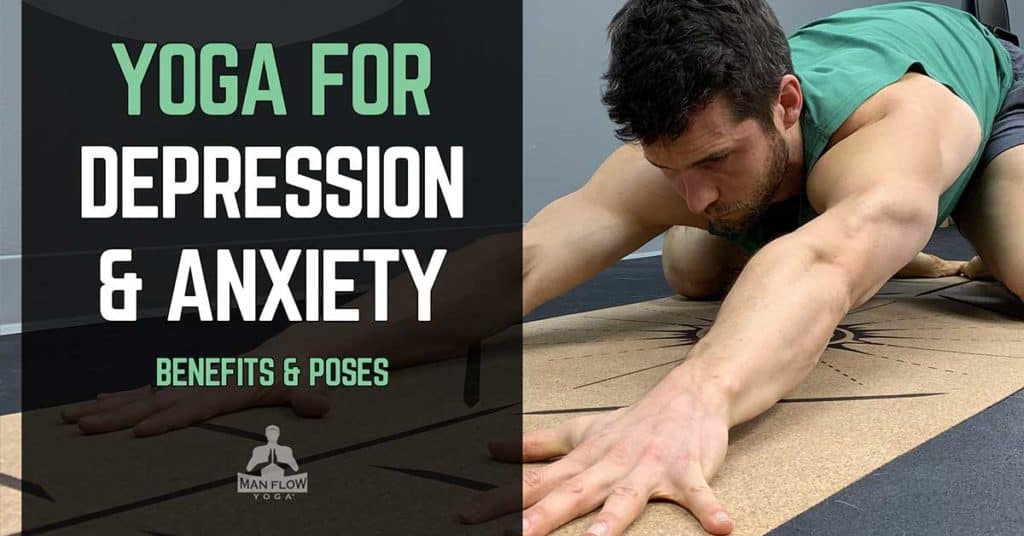
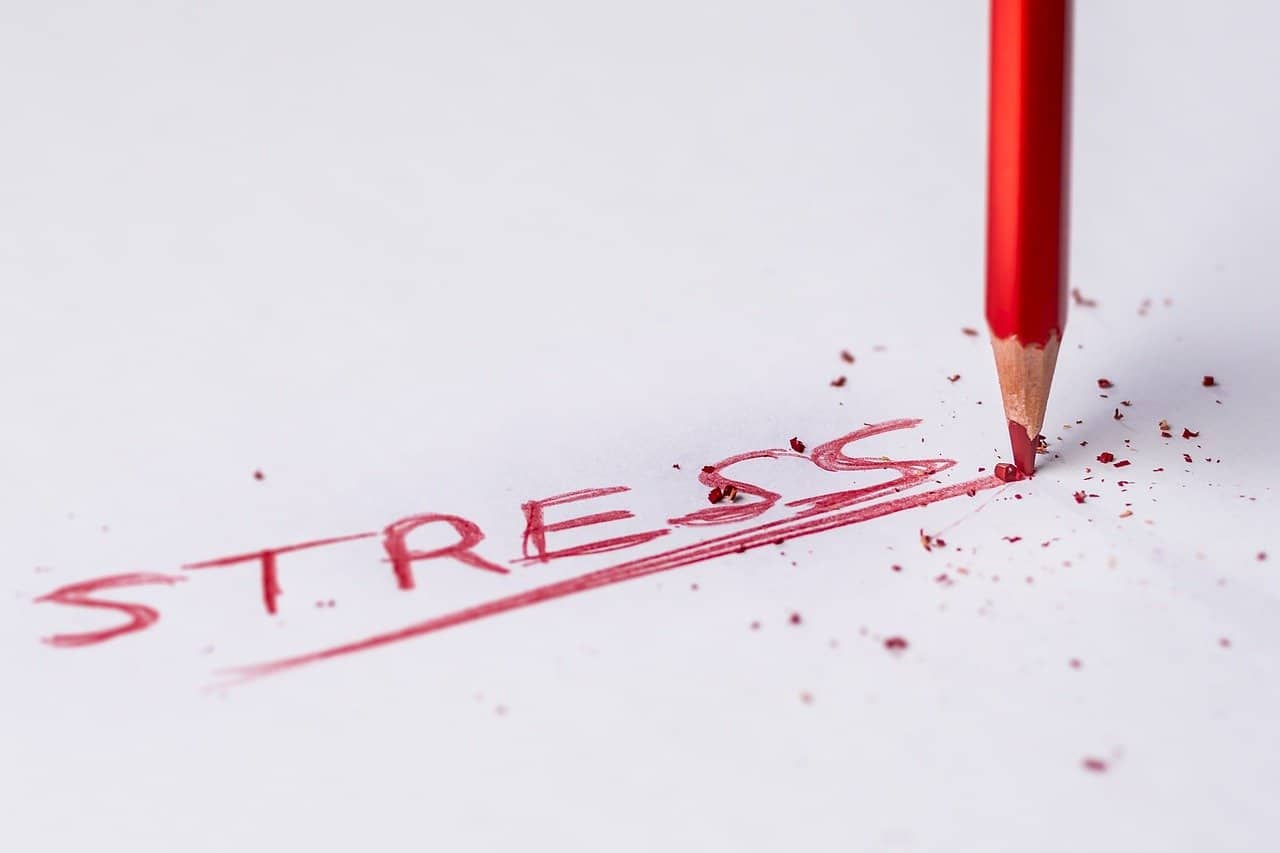
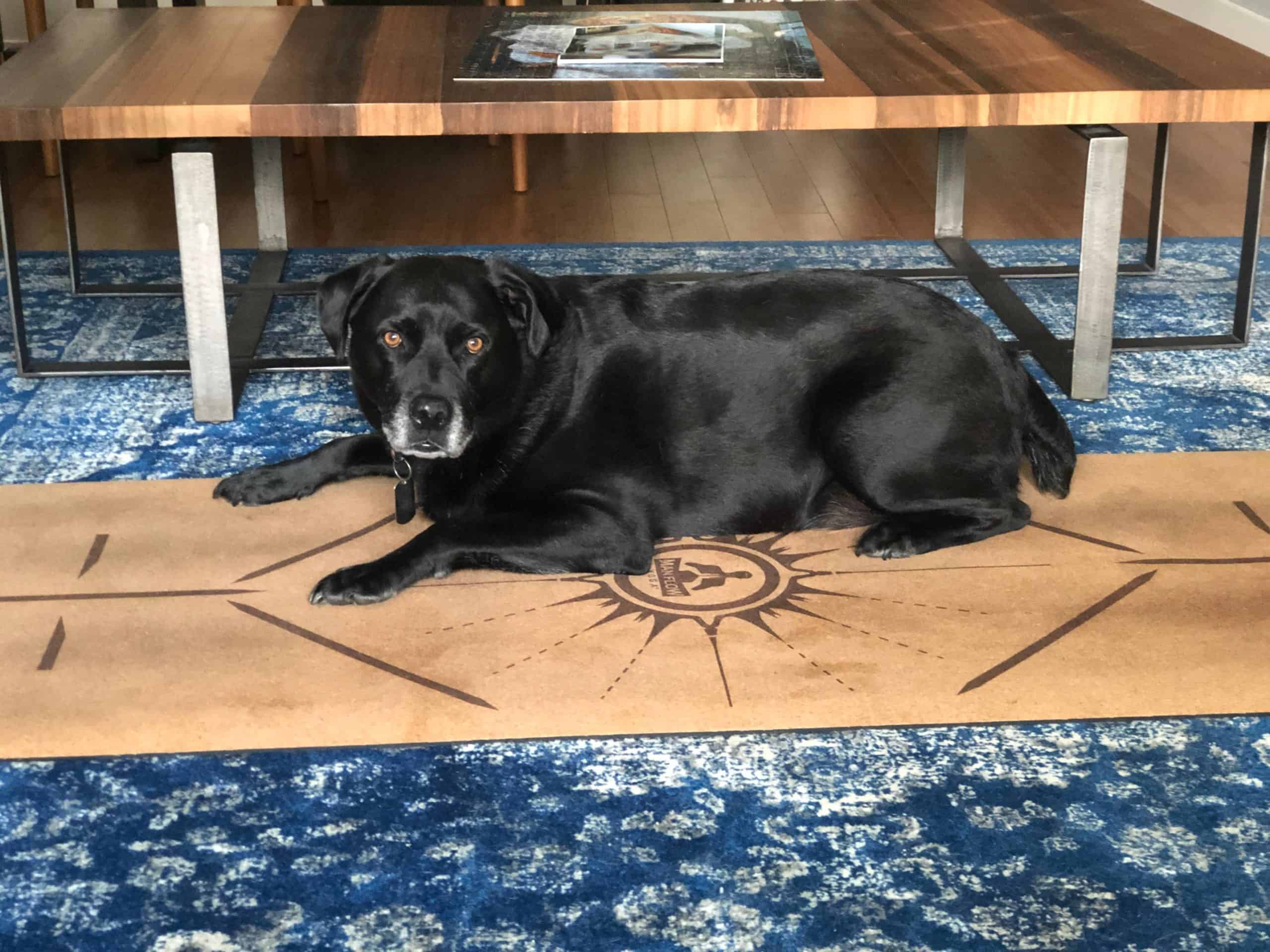
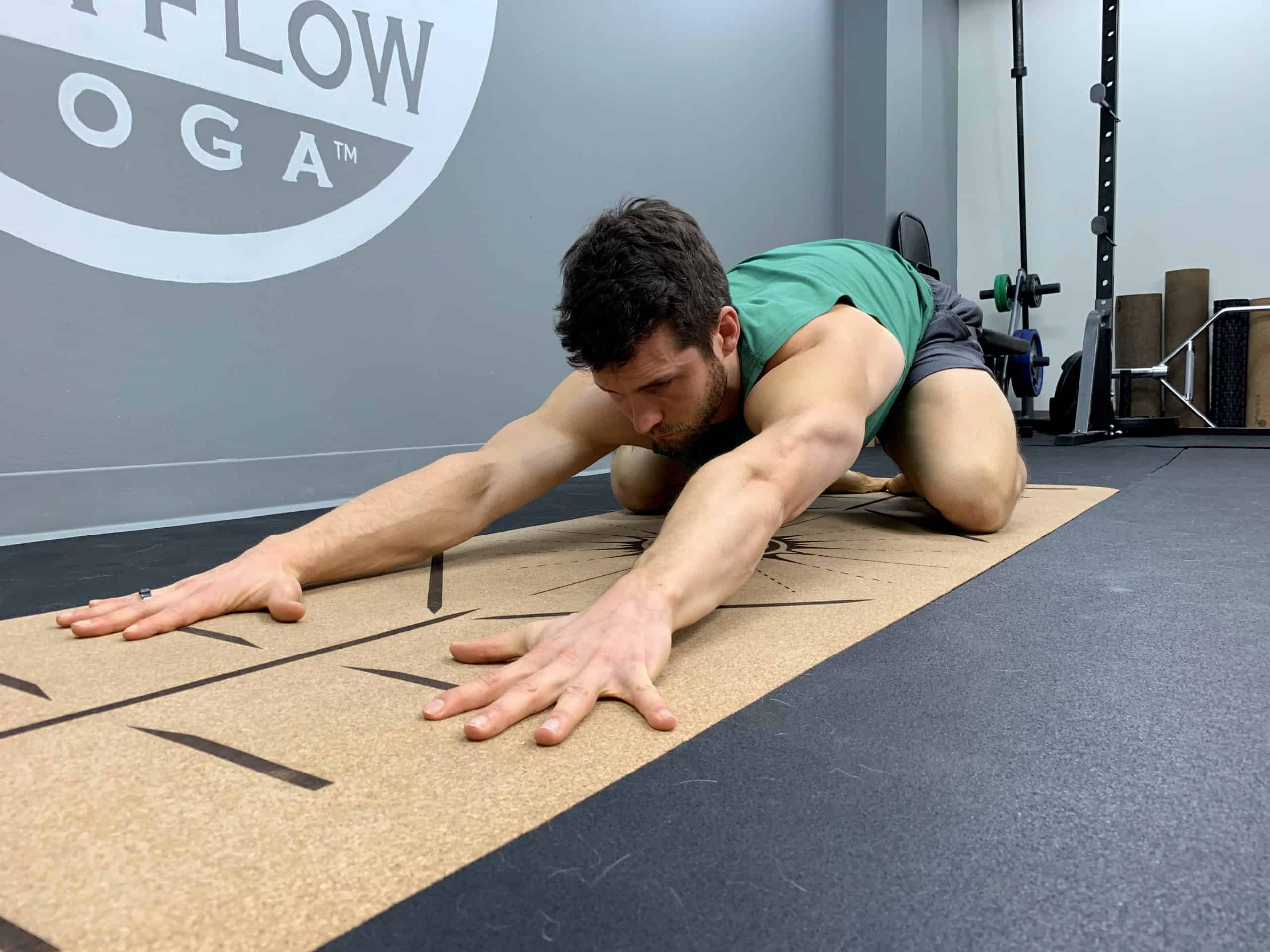
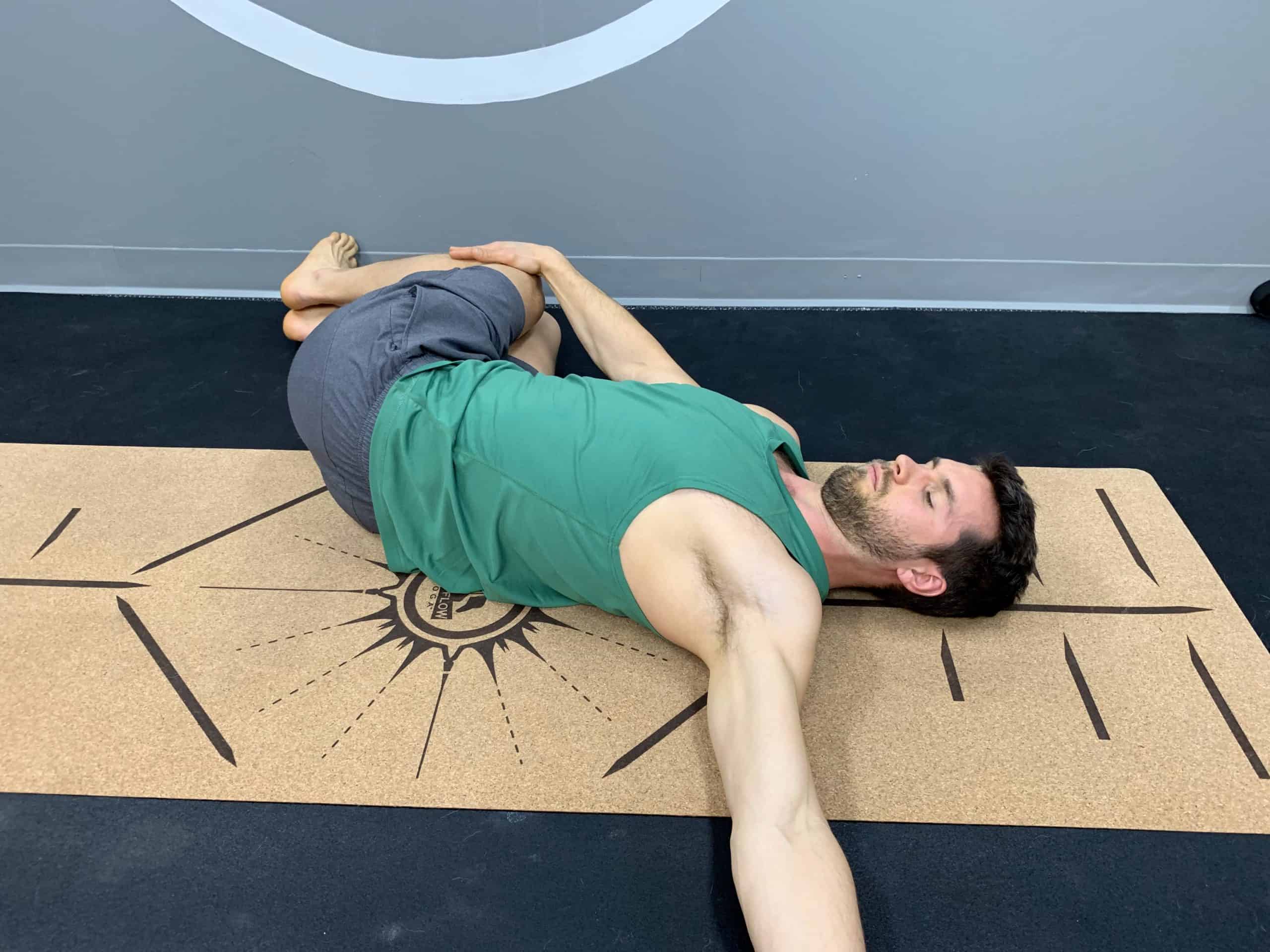
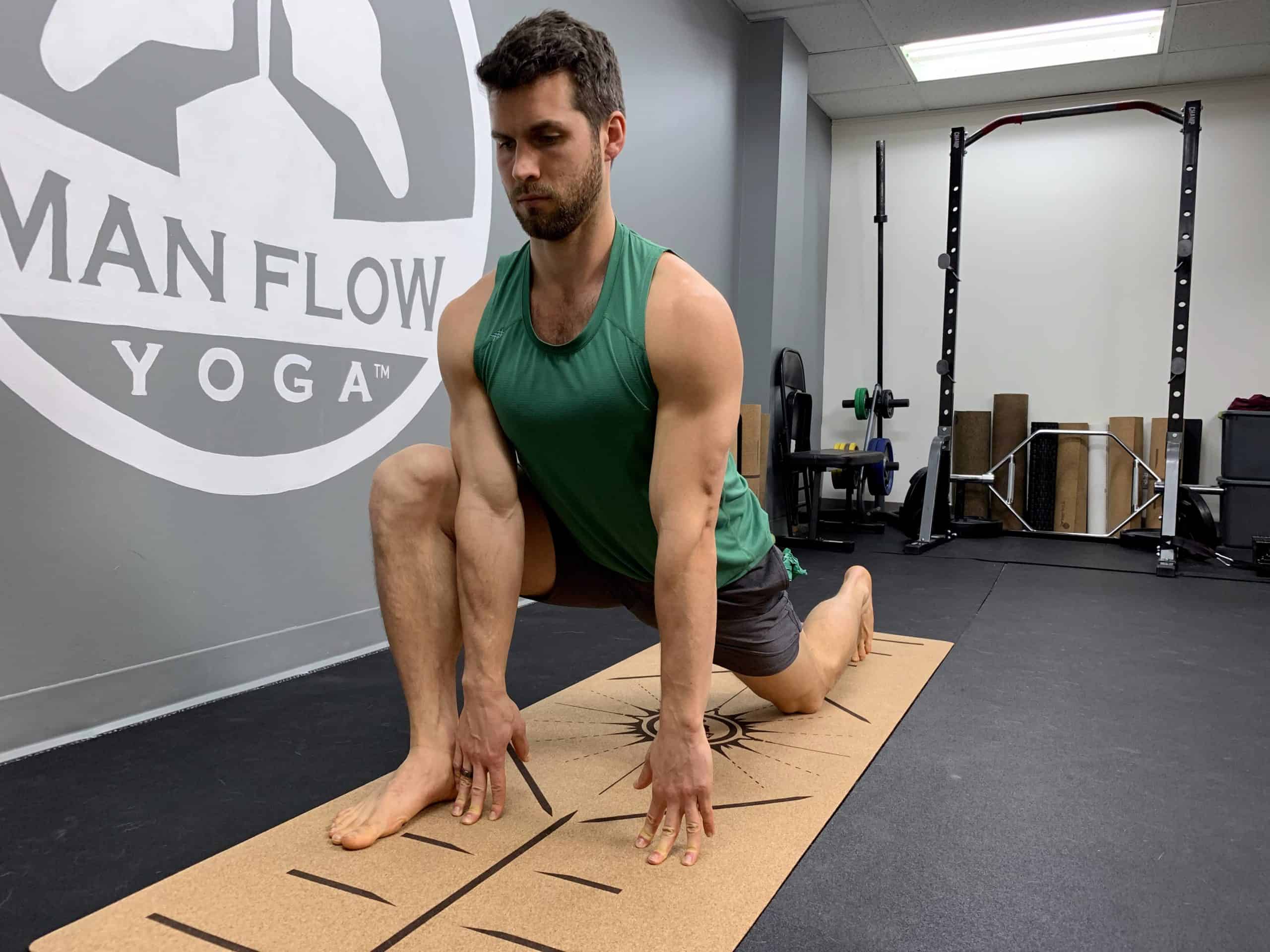
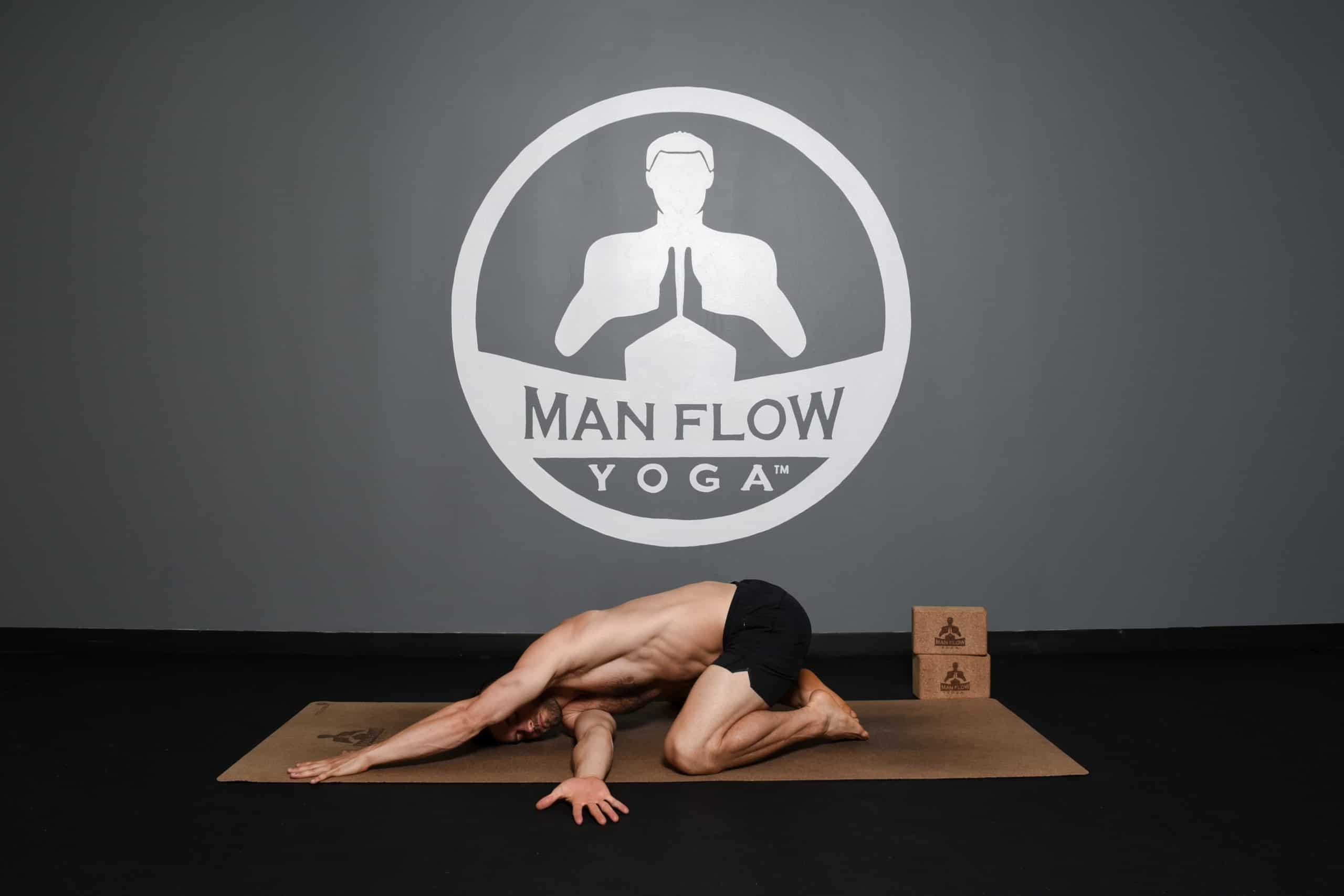
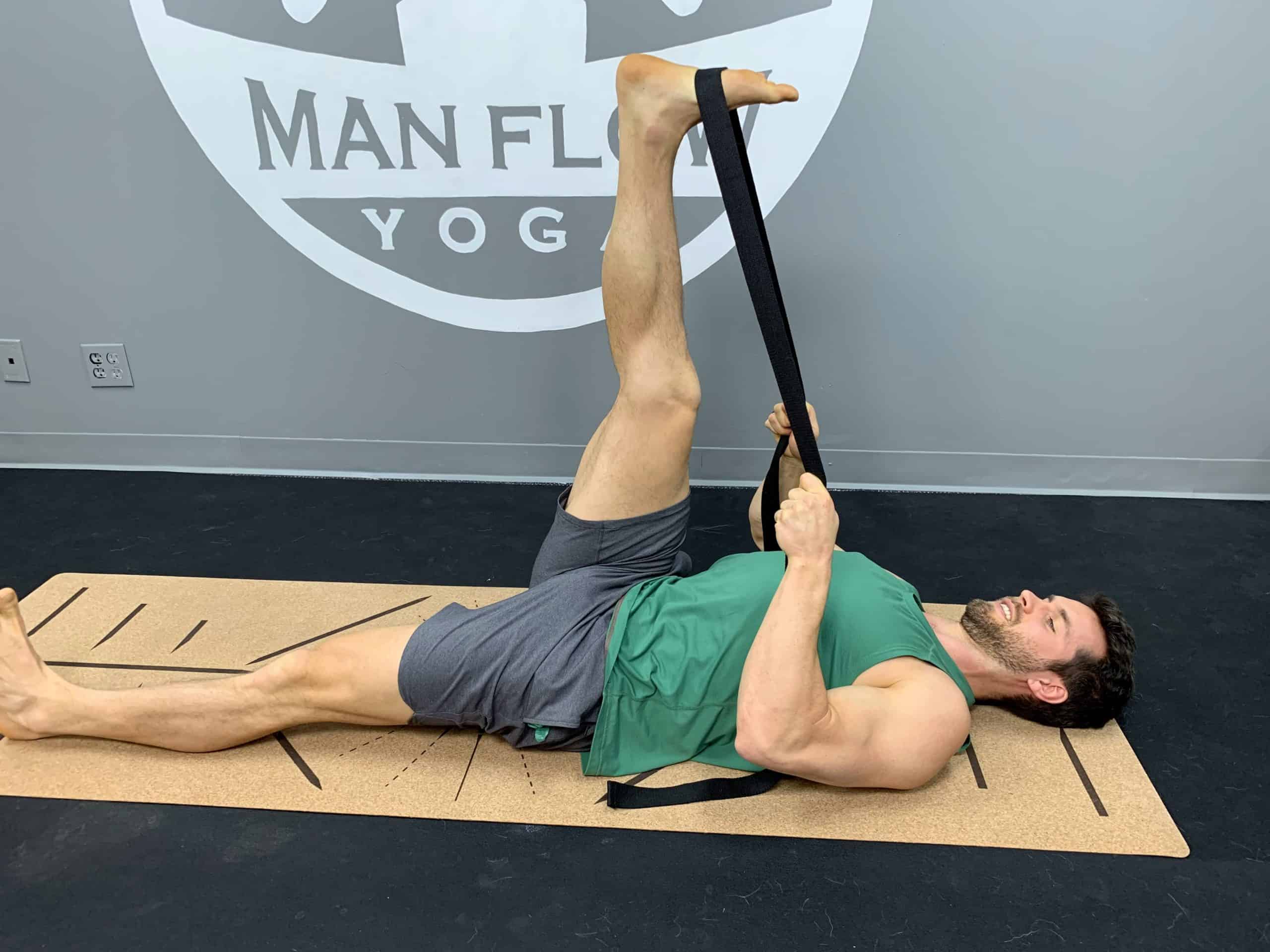
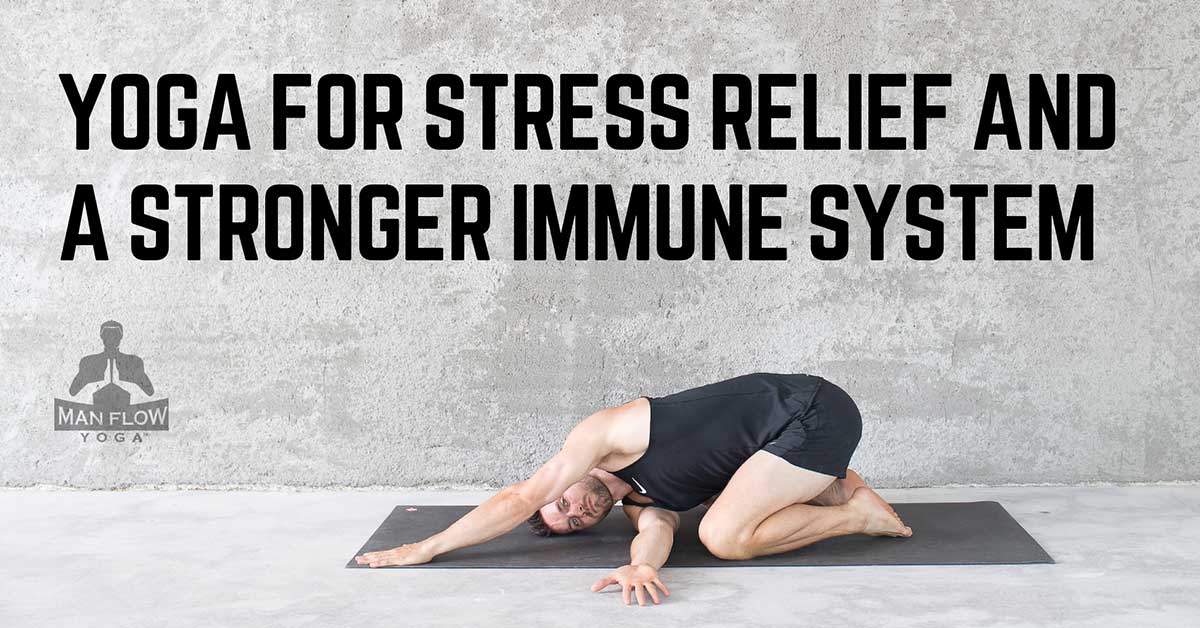
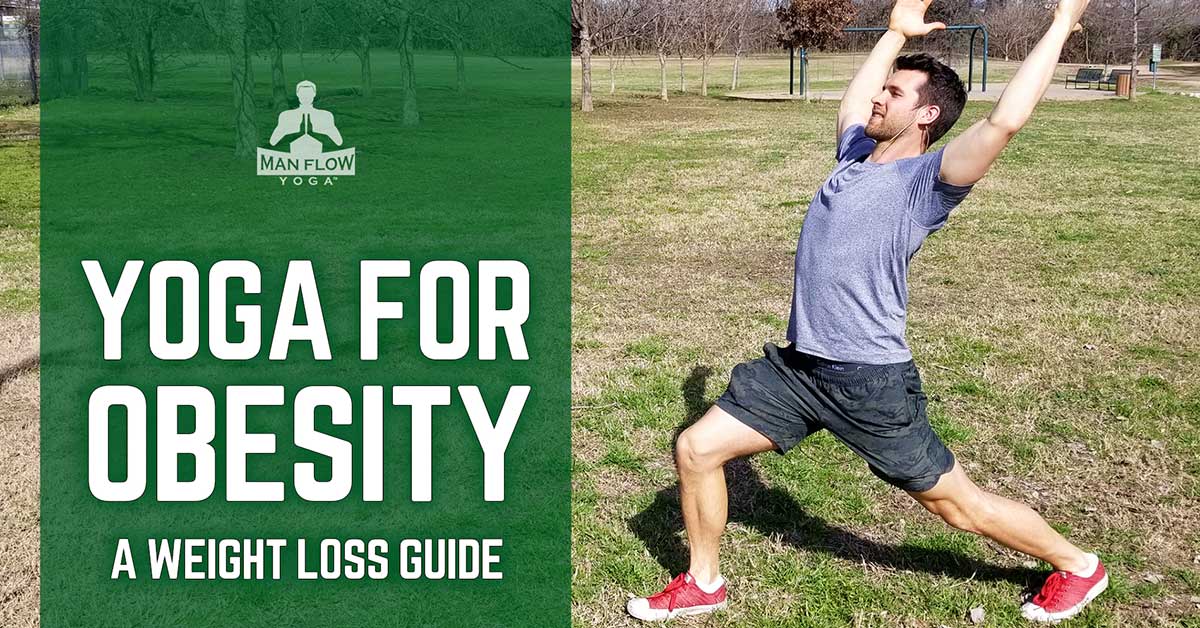

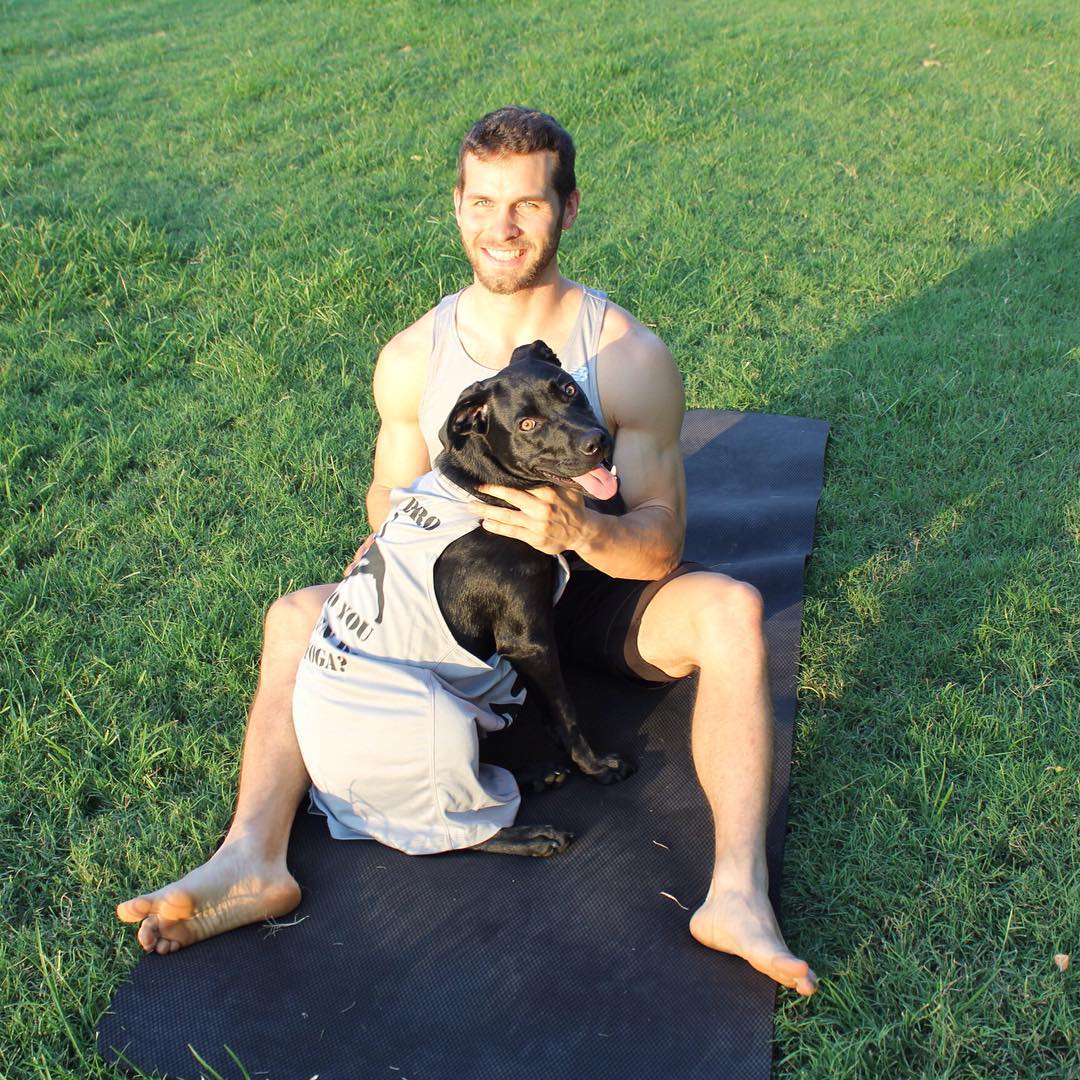
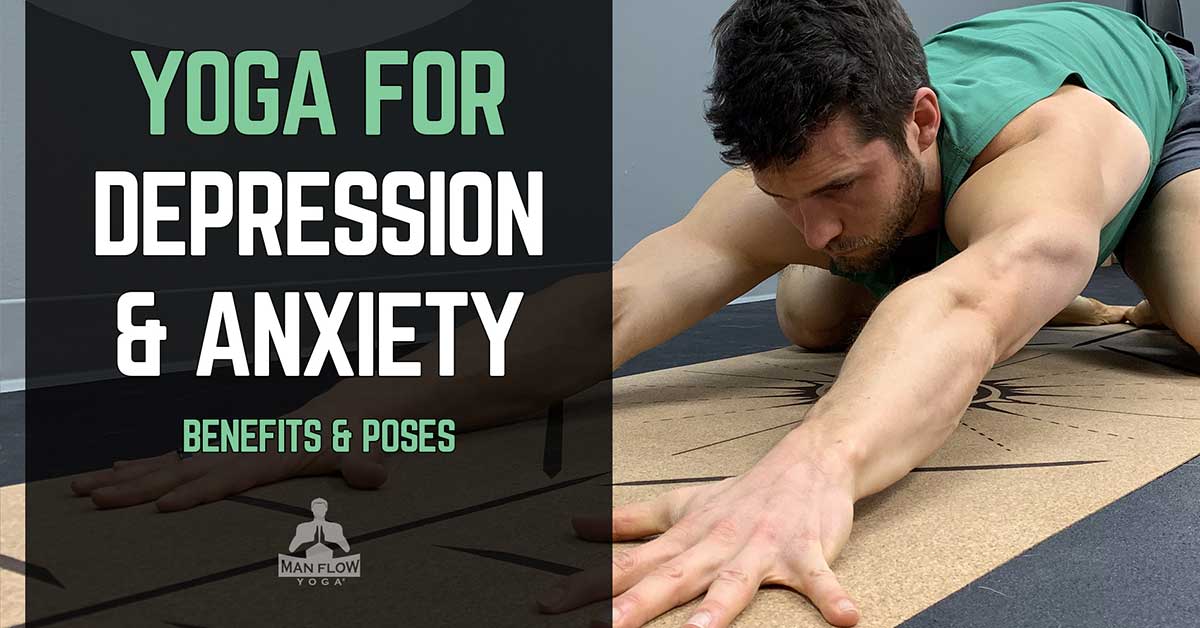
The reclined twist is a good stretch for the side body muscles too. It helped me in toning my side body. Thanks for sharing!
Good feedback Harshita! Hope you enjoyed the workout.